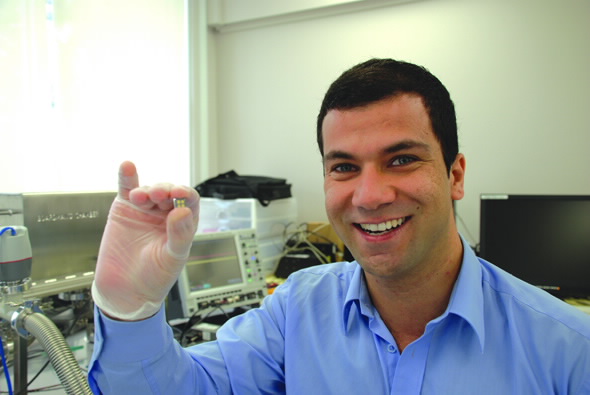Australian scientists have developed a miniature radiation detector, the size of a human cell nucleus. The detector is designed to accurately measure the amount of energy deposited by ionising radiation within a human cell nucleus allowing better understanding of radiation effects on humans, ANSTO’s on-line magazine Velocity reported today.
 |
| Australian scientists have developed a miniature radiation detector, the size of a human cell nucleus. |
The technology was developed in a collaboration between ANSTO, the University of Wollongong and the University of New South Wales with the support of the Australian Research Council. ANSTO’s Dr Mark Reinhard, who is leading the ANSTO activities, said the technology was significant in terms of the ability to accurately measure different kinds of radiation interactions with cells and predict the cancer-risk of radiation exposure.
“This new technology has significant potential in two important fronts: for air and space travel where radiation is complex; and for understanding the radiation dose people receive during cancer treatments, such as the revolutionary proton therapy which is yet to come to Australia,” he said.
“Proton therapy is an emerging cancer treatment that is more accurate in dose delivery with reduced side effects, however it is more complex than conventional radiotherapy,” explained Dr Reinhard.
“This new micro-dosimeter is helping to understand the differences in these types of radiation treatments.
“Conventional detectors measure large volume radiation doses which helps predict the effect of gamma radiation on biological systems. But for other forms of radiation which are encountered in aviation or space environments, conventional detectors are not adequate.”
Development of the micro-dosimeter occurred at ANSTO using a heavy ion particle accelerator with the work capturing the interest of international researchers.
“An earlier version of this micro-dosimeter was investigated in space to look at the effects of cosmic radiation on astronauts by ANSTO’s collaborative partners at the University of Wollongong with funding from the National Space Biomedical Research Institute,” Dr Reinhard said.
“We have also developed a ‘human phantom’ containing the detectors which has helped oncologists more accurately deliver proton treatment to fight cancer cells.
“We are very excited about this new technology and believe this is the next step to going even smaller and measuring radiation energy impact on DNA. Ultimately the survival of a biological cell under exposure to ionising radiation depends on radiation damage to the DNA.
“The possibilities are countless if we can measure the effects of radiation down to the scale of DNA,” he concluded.
Published: 10/03/2008

